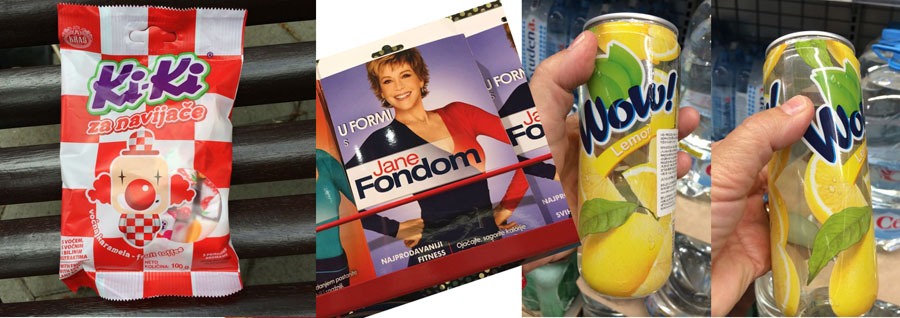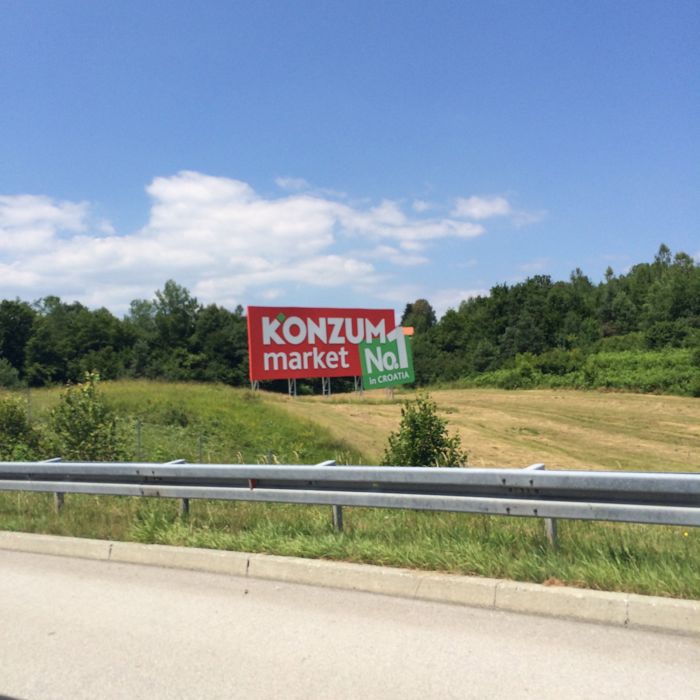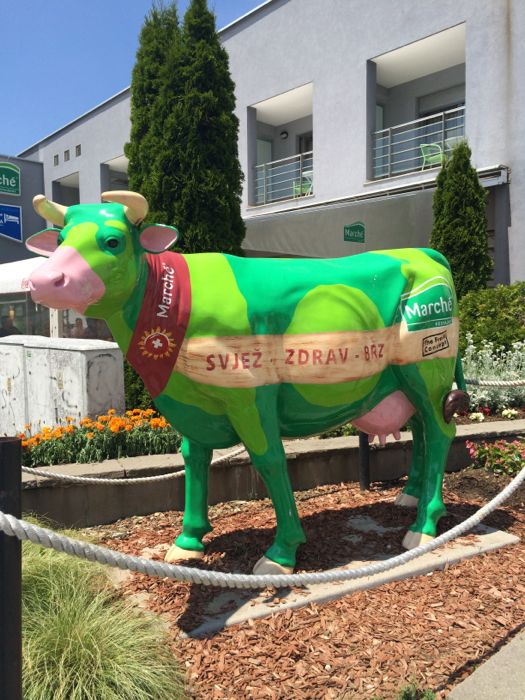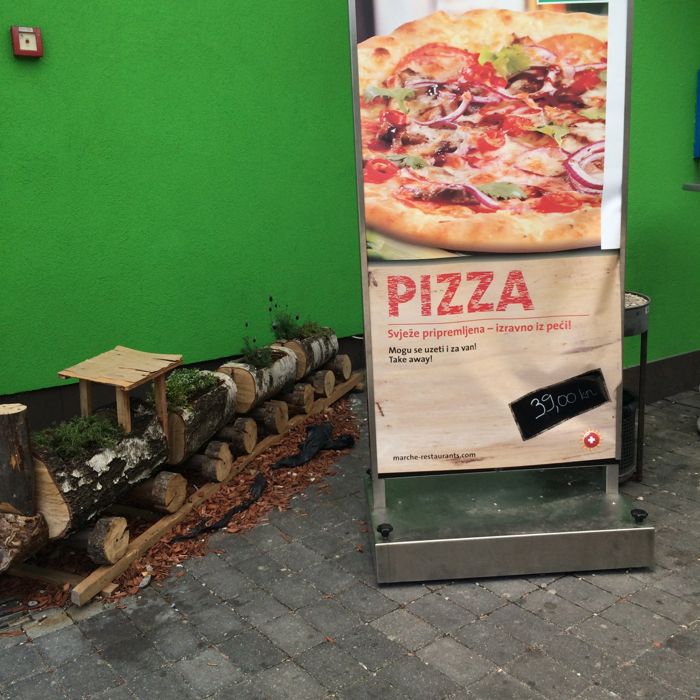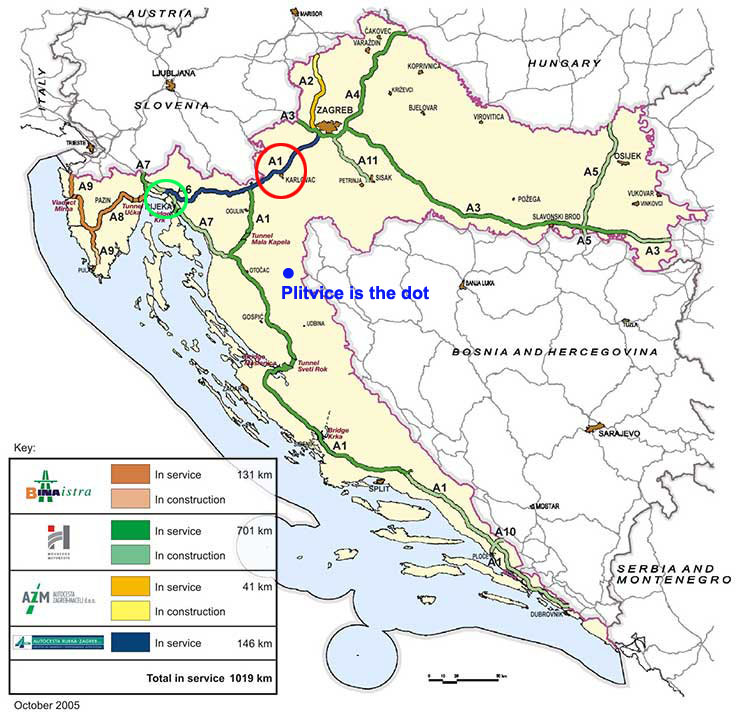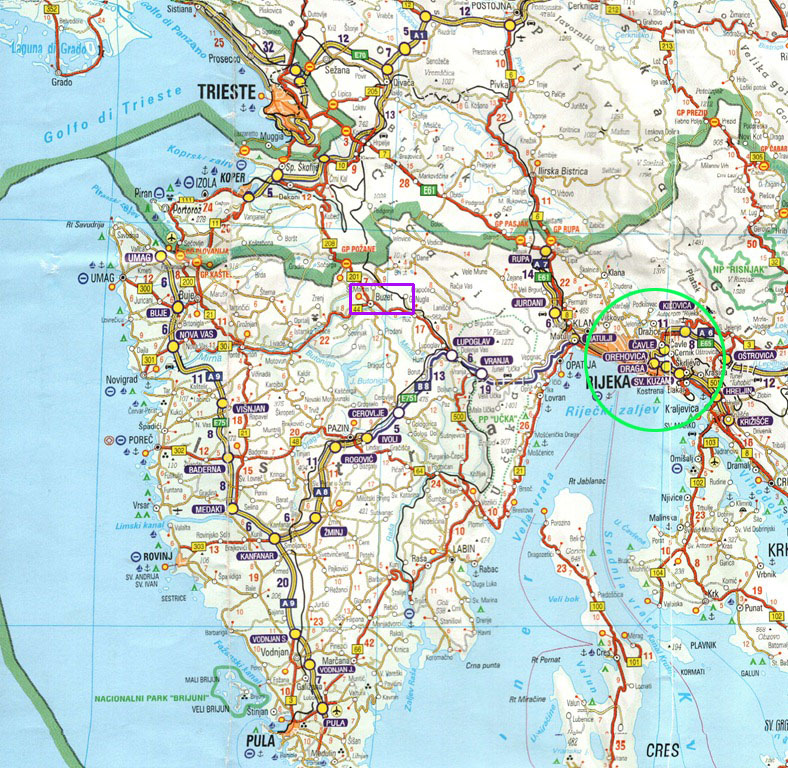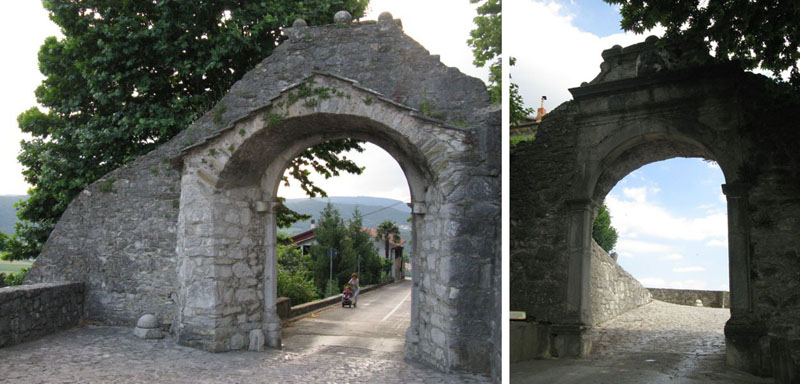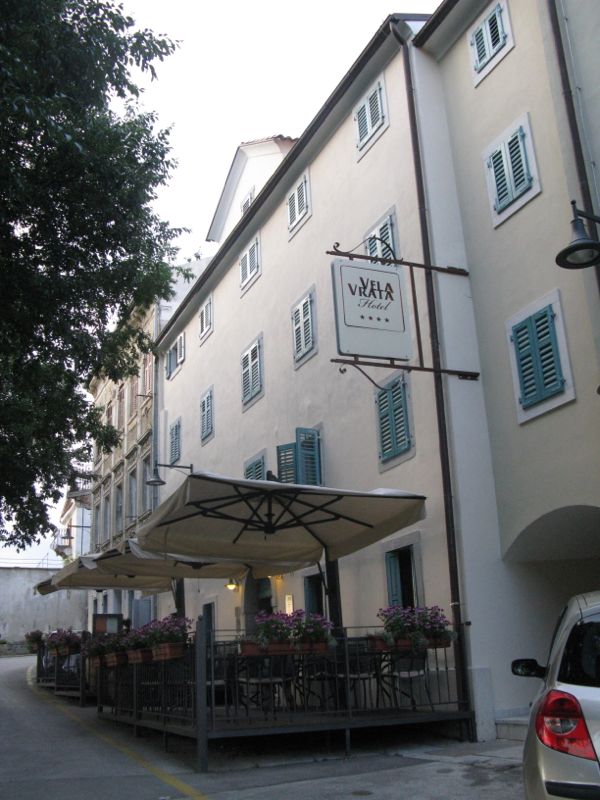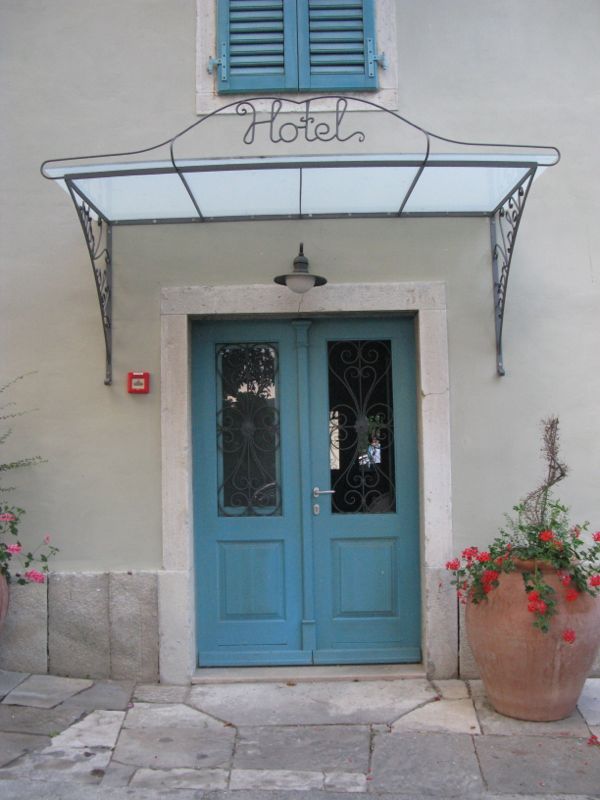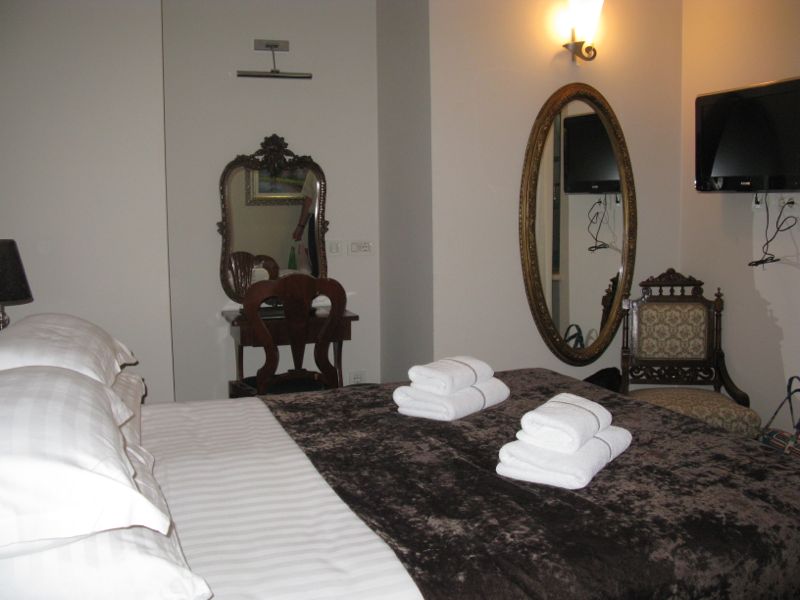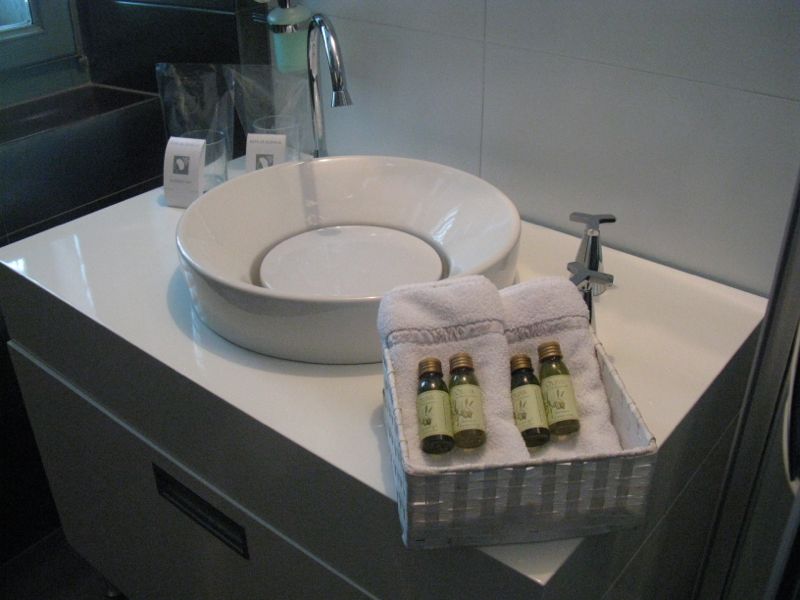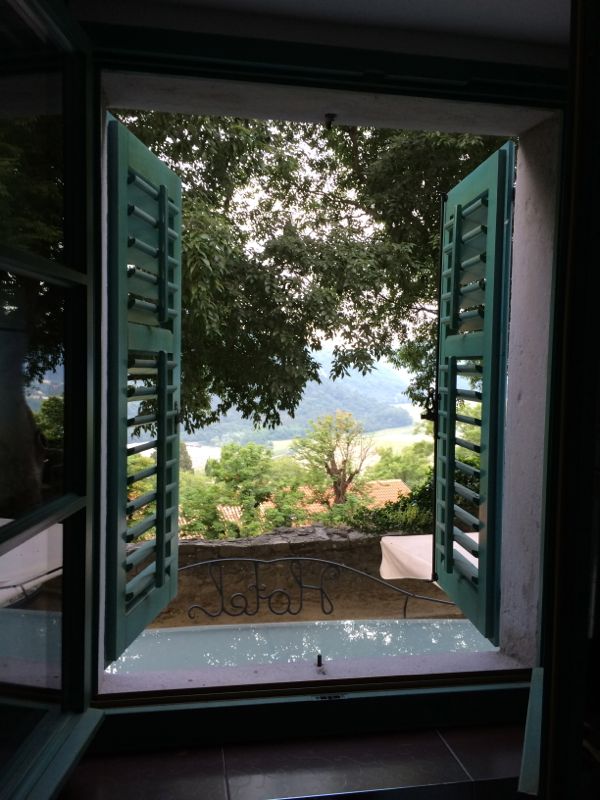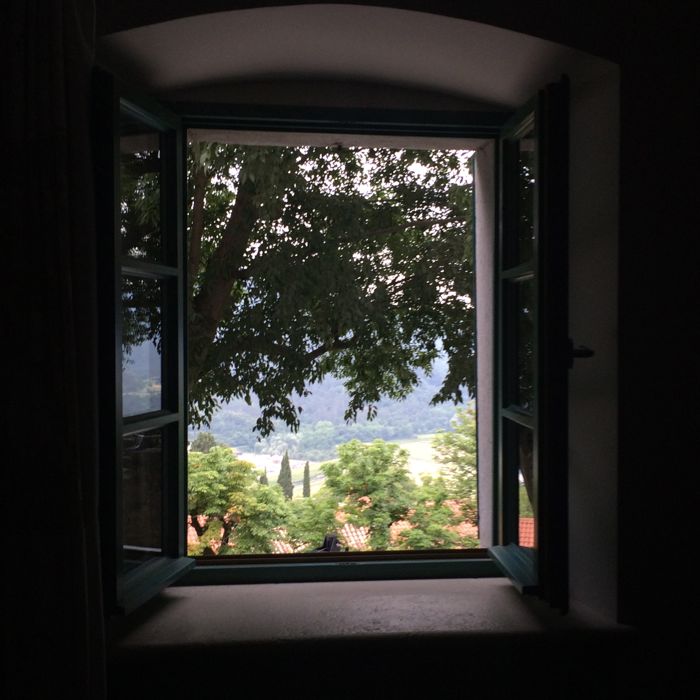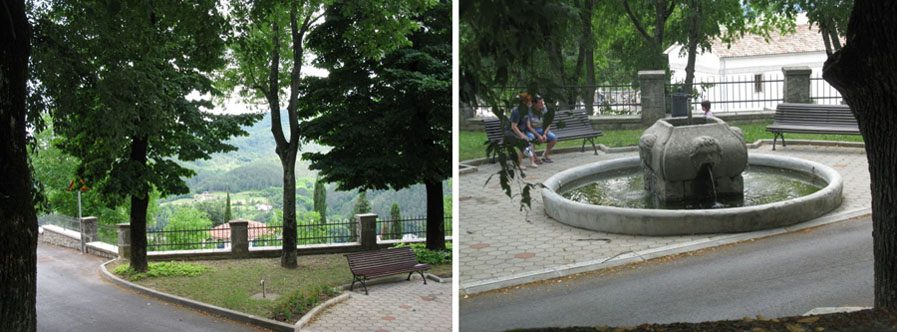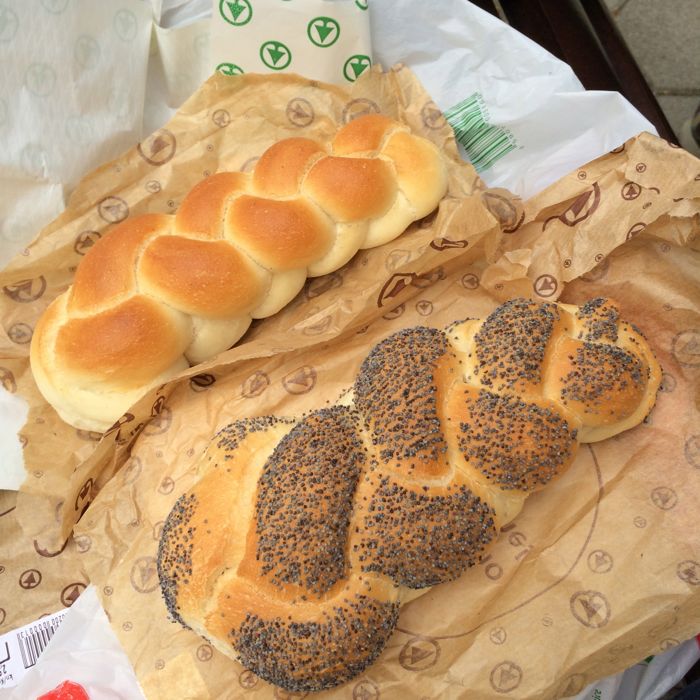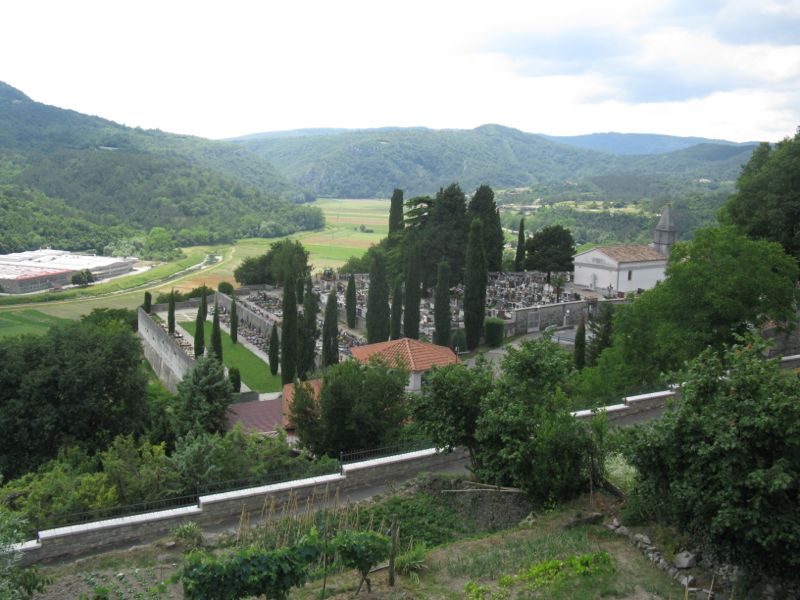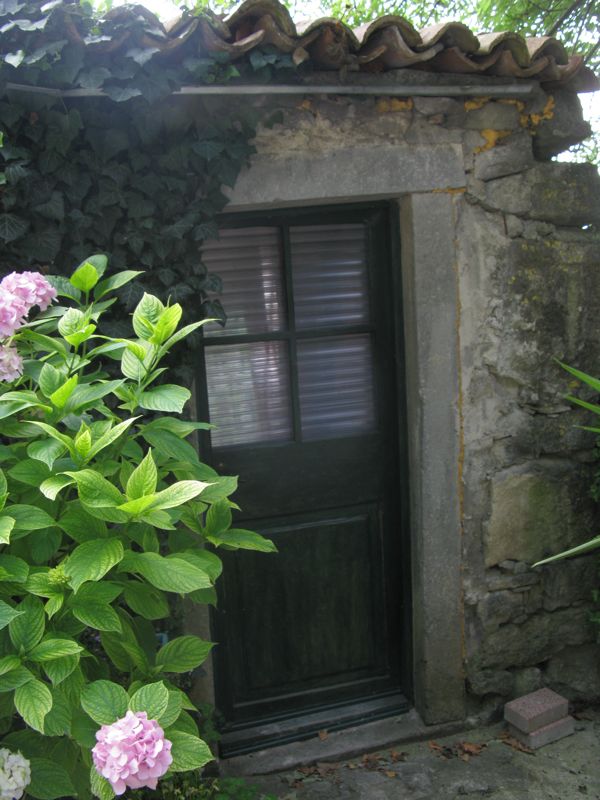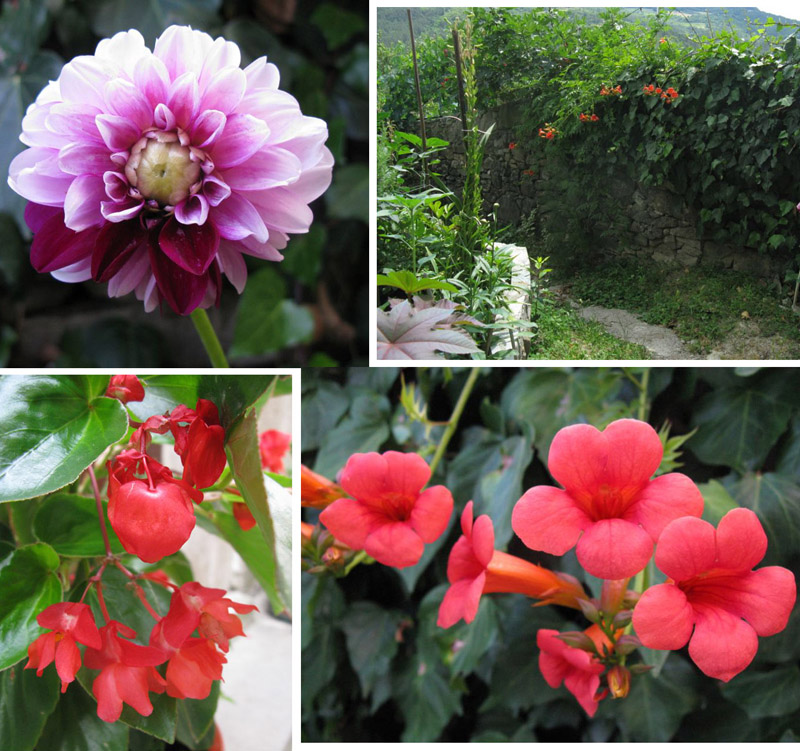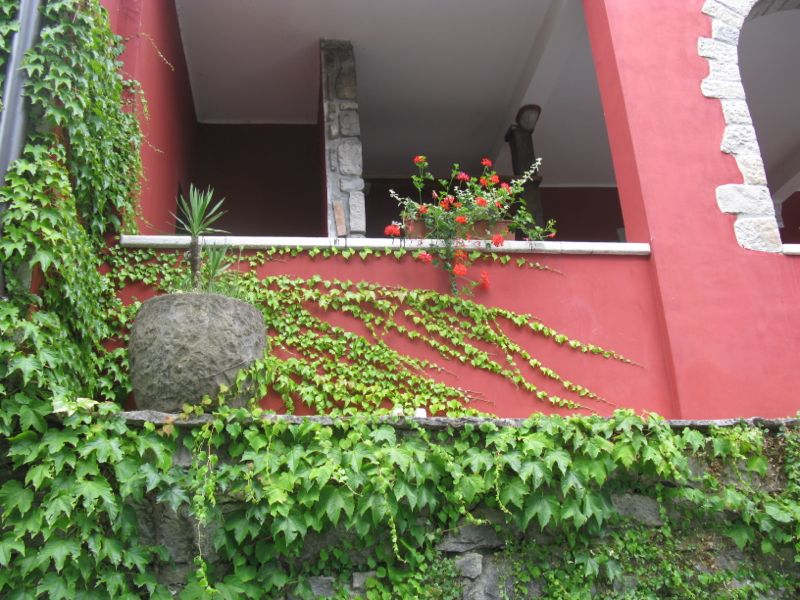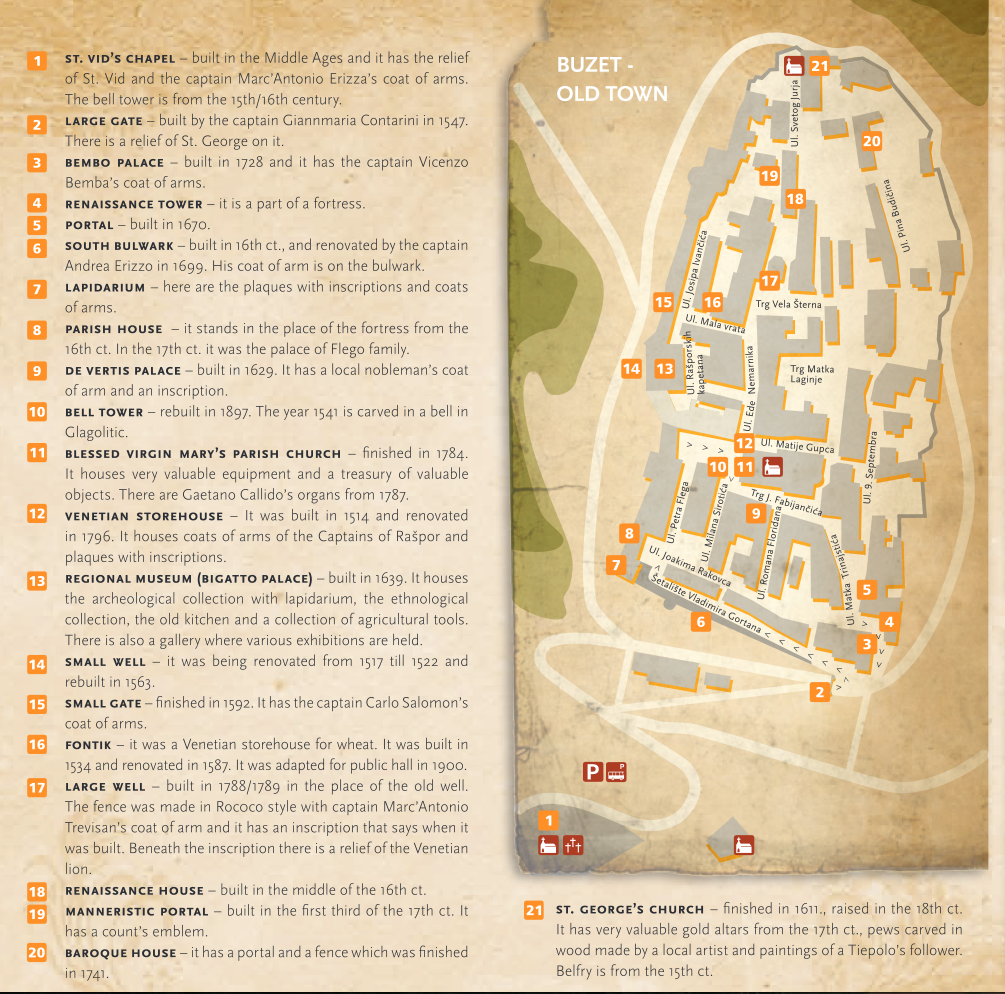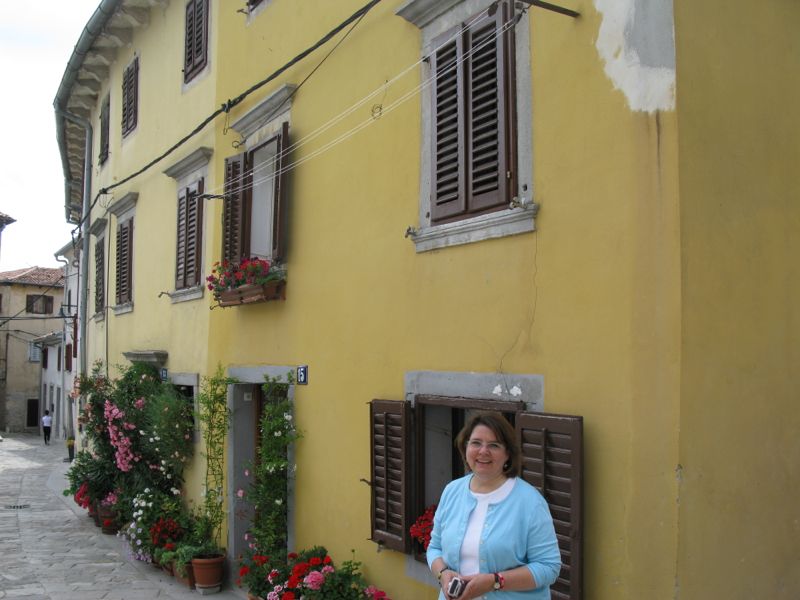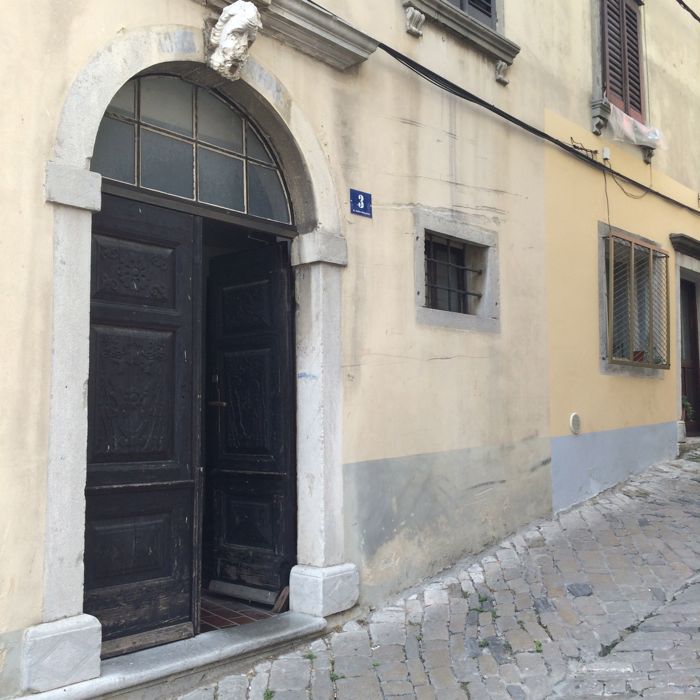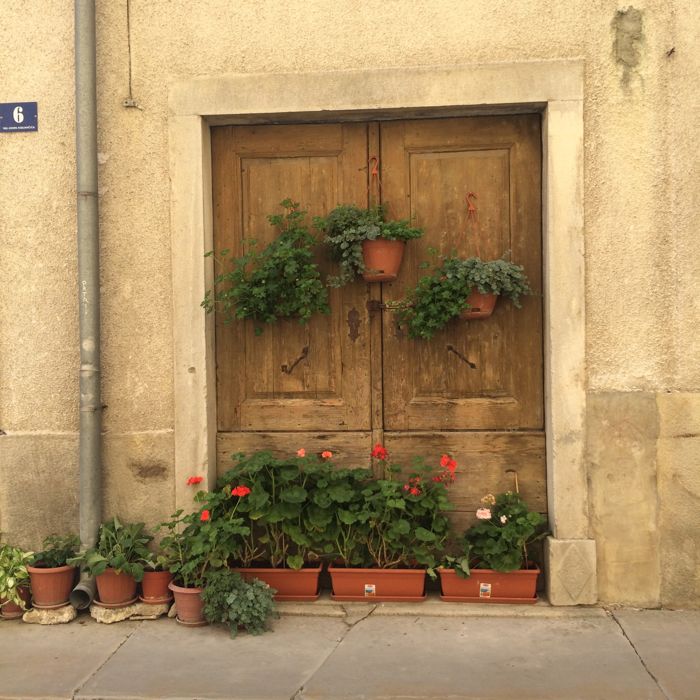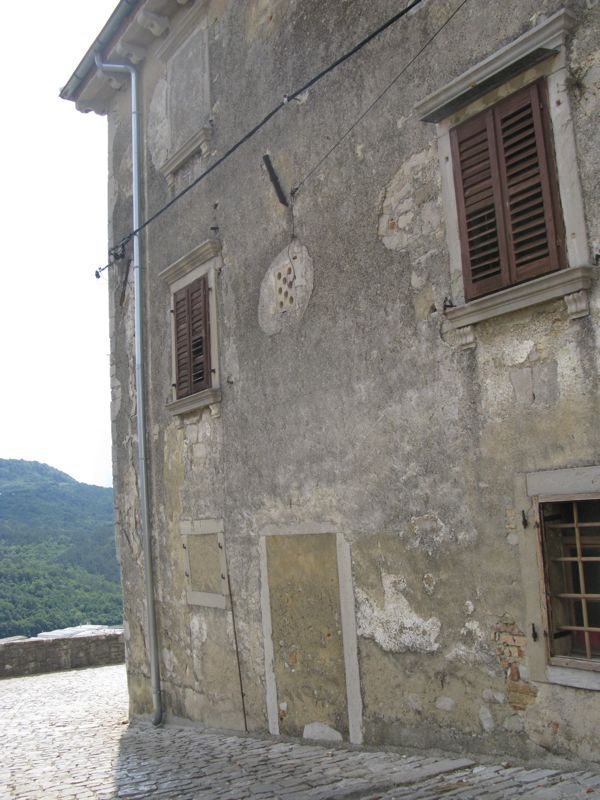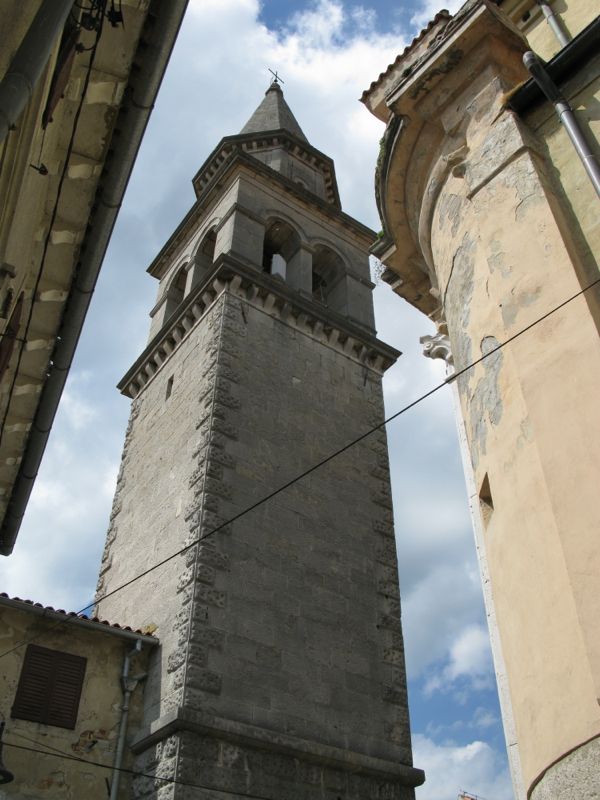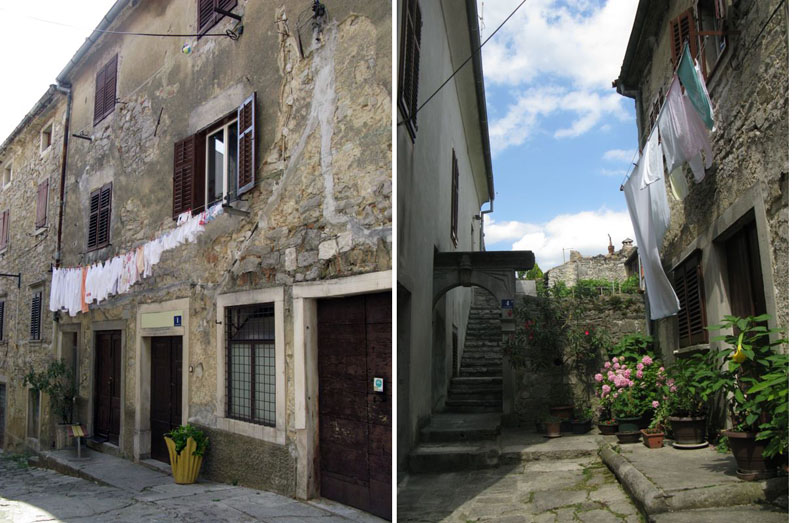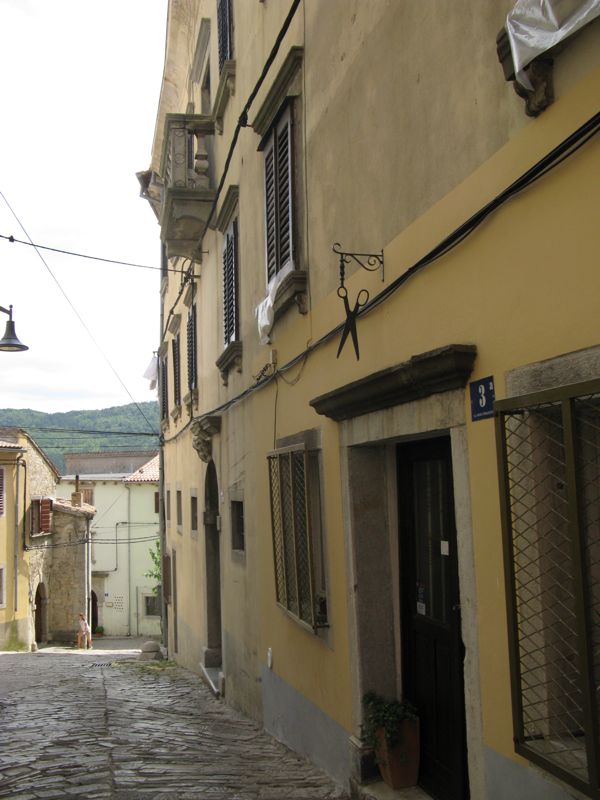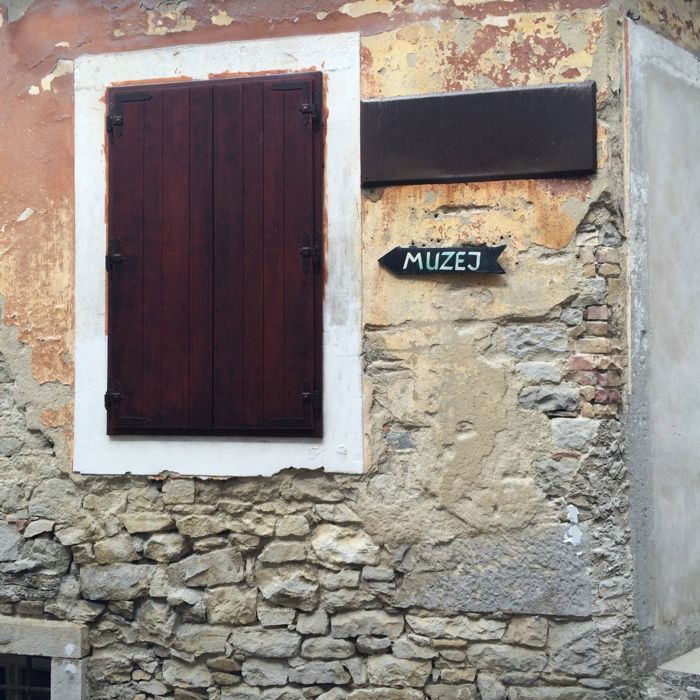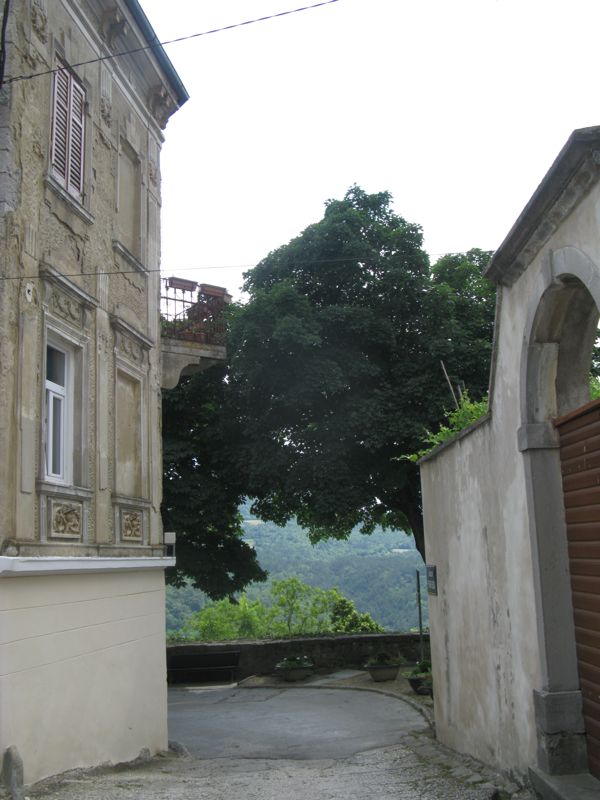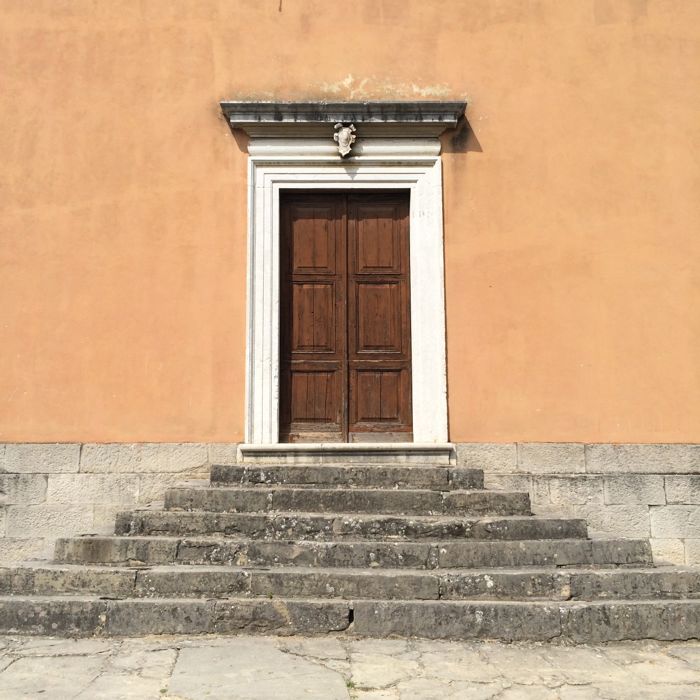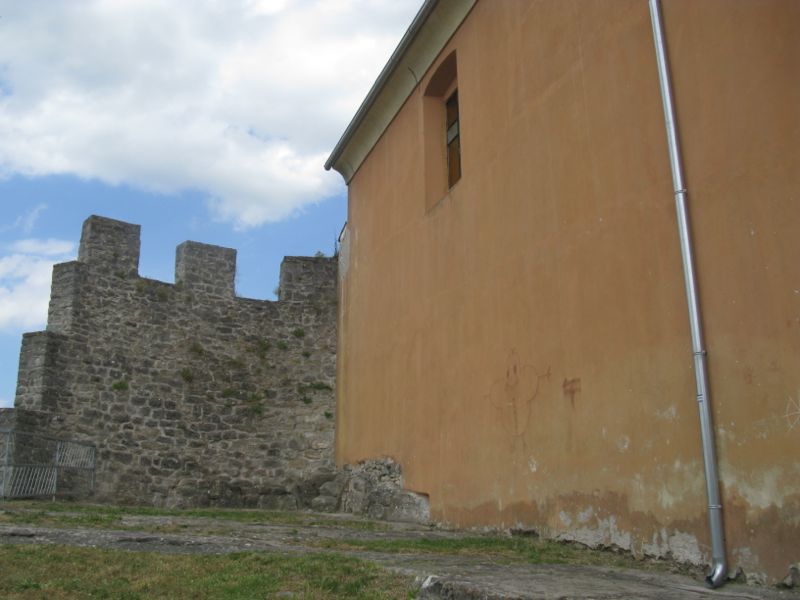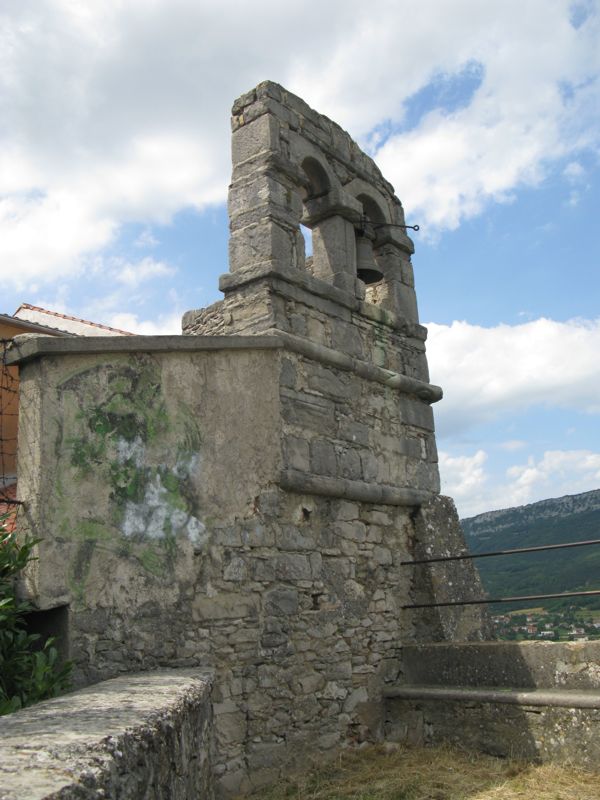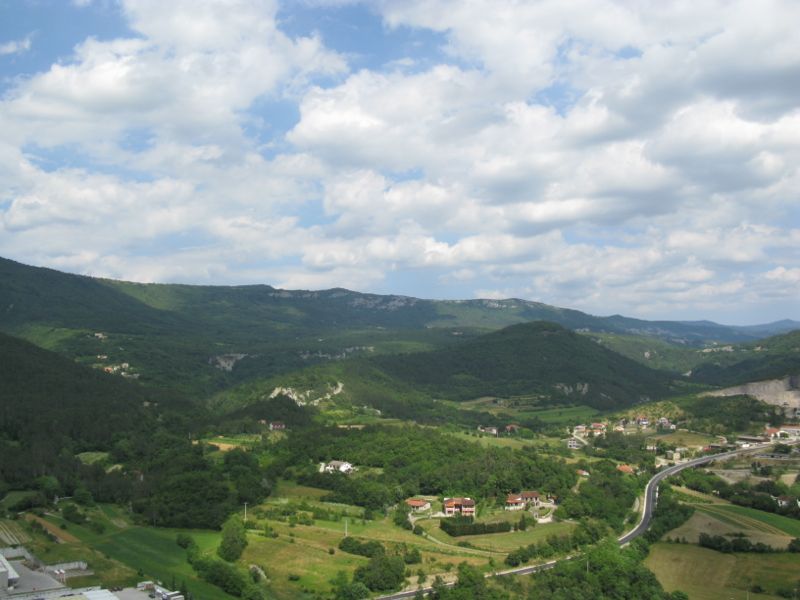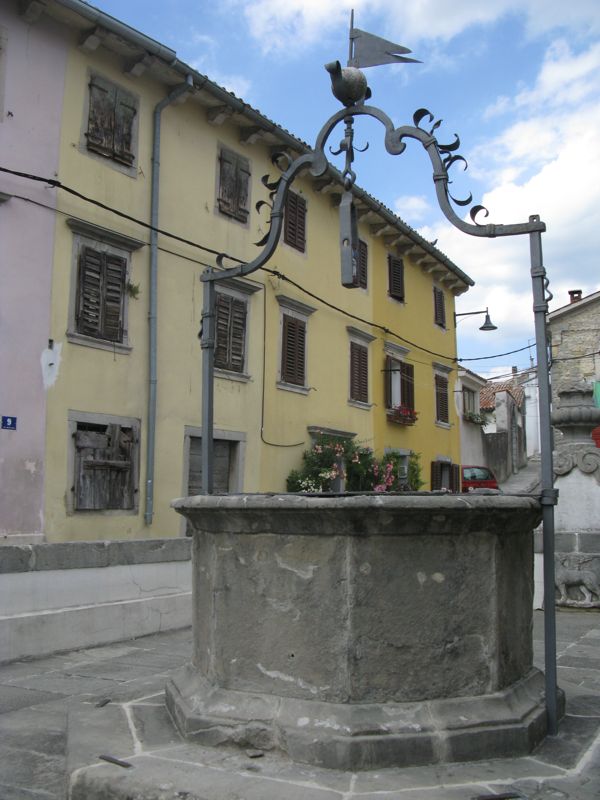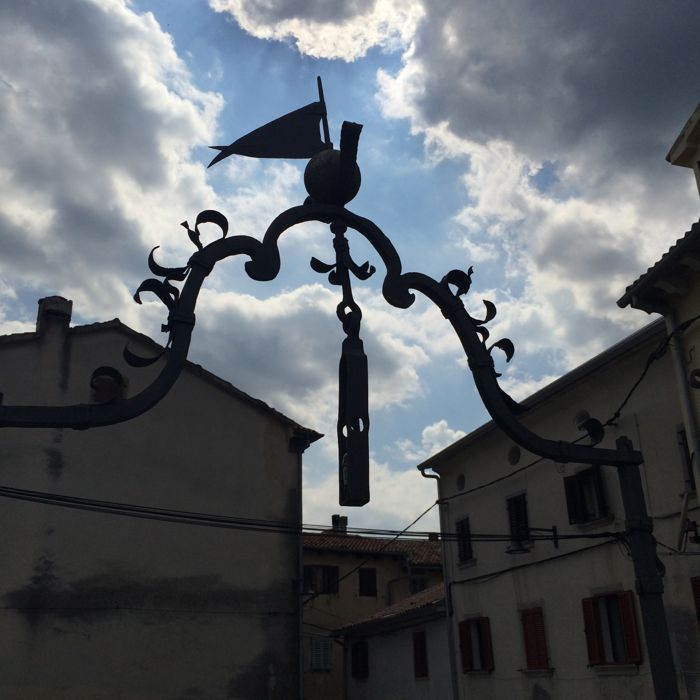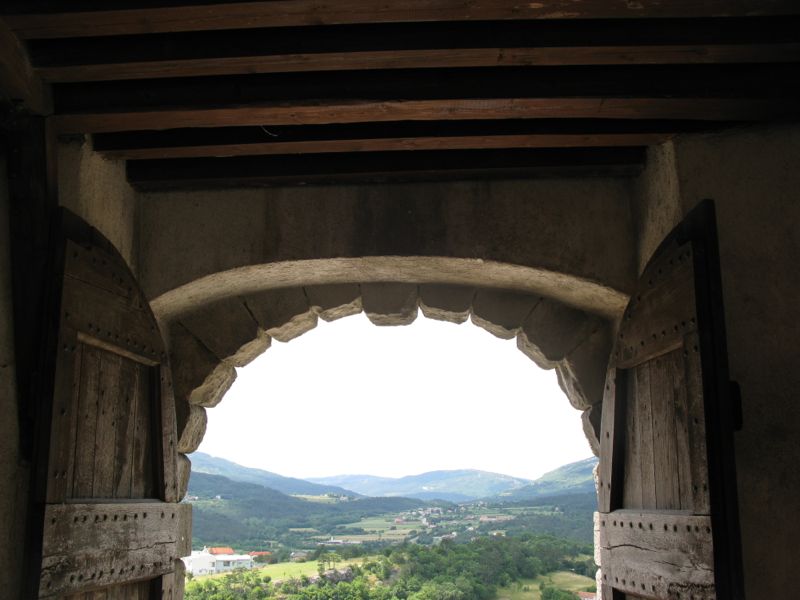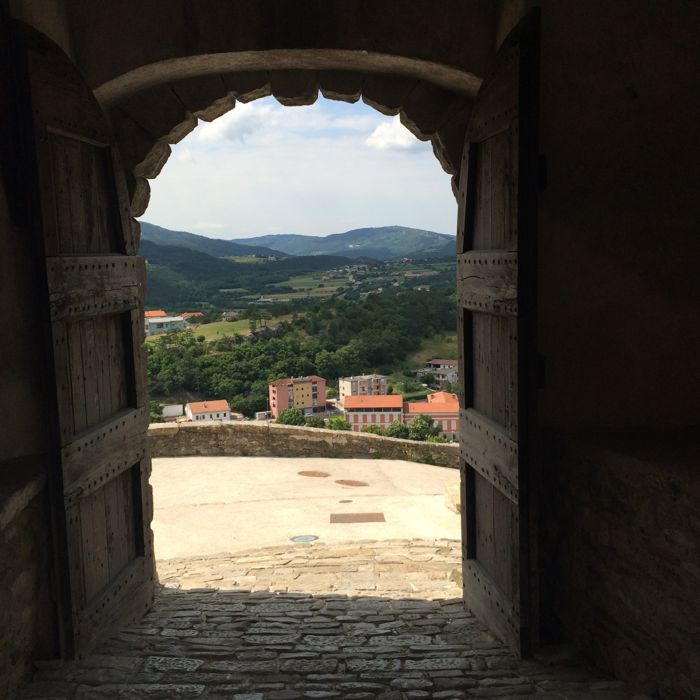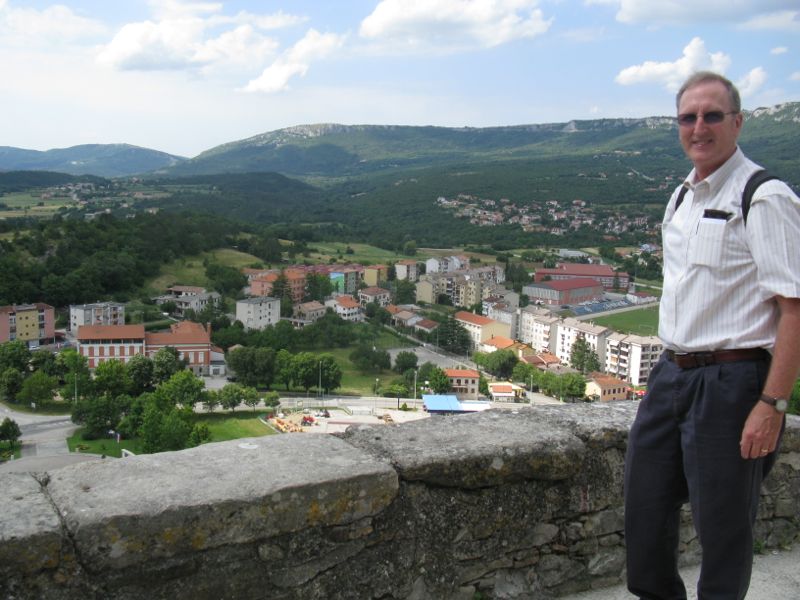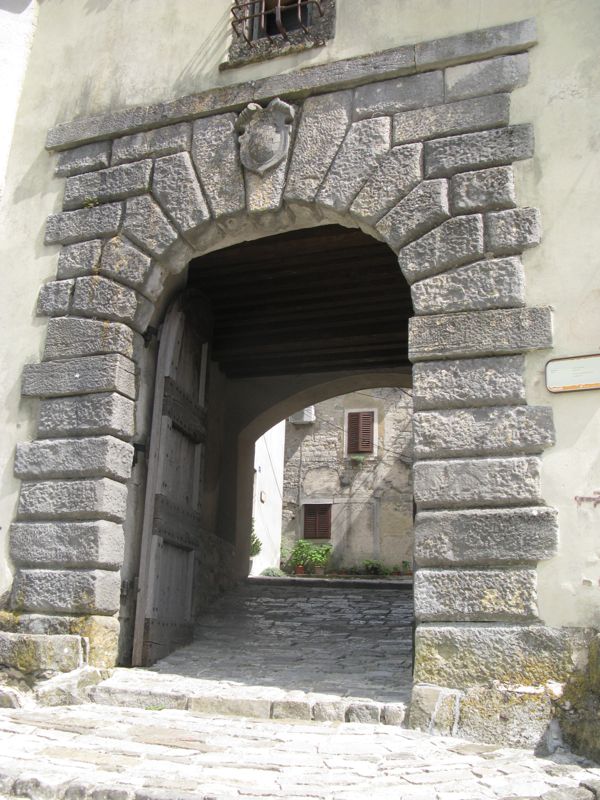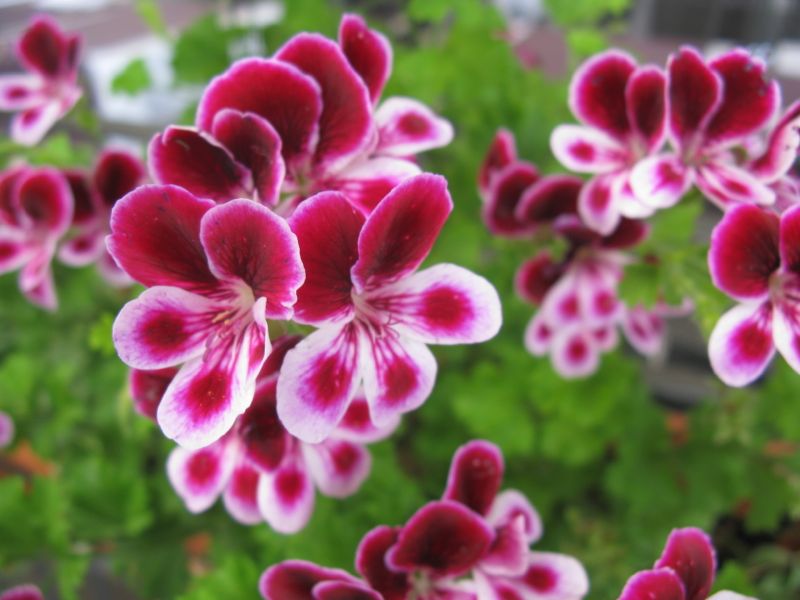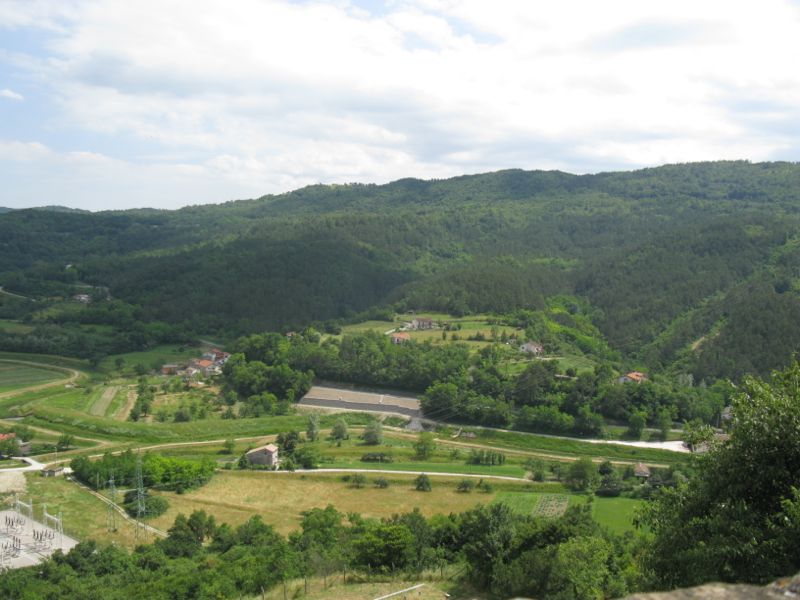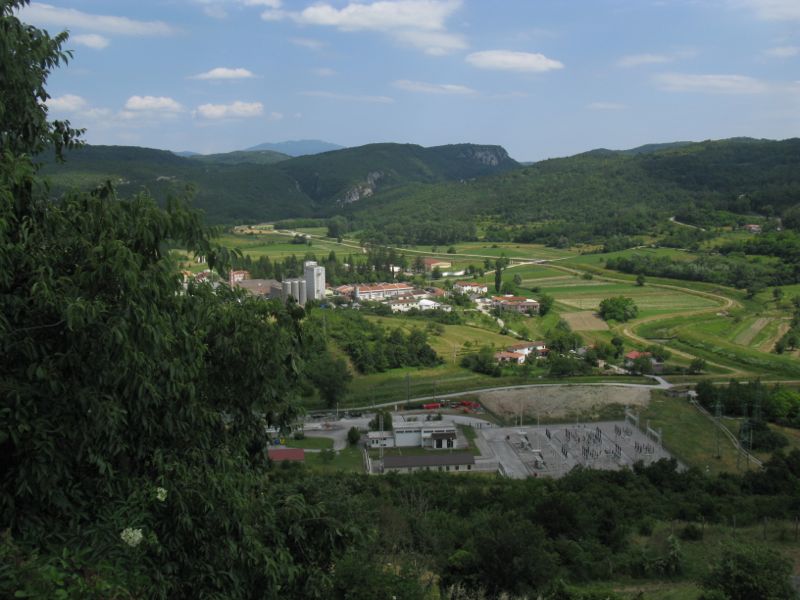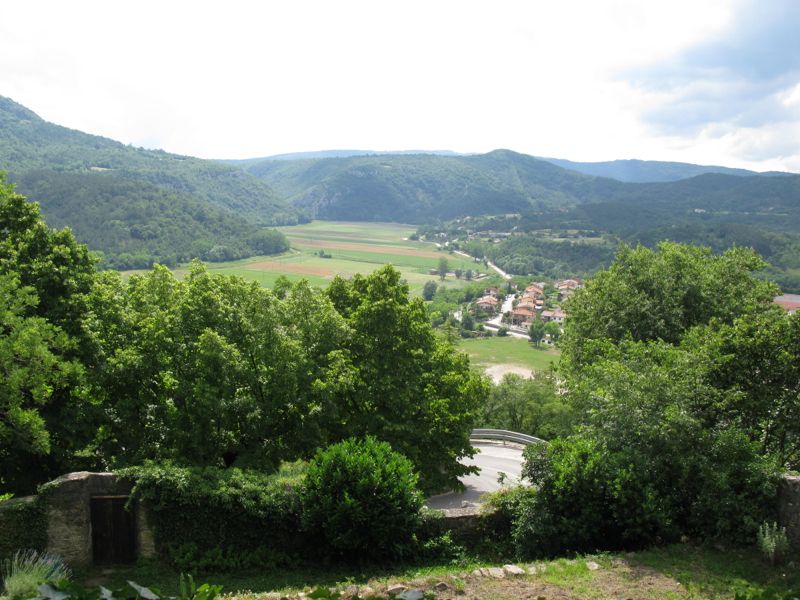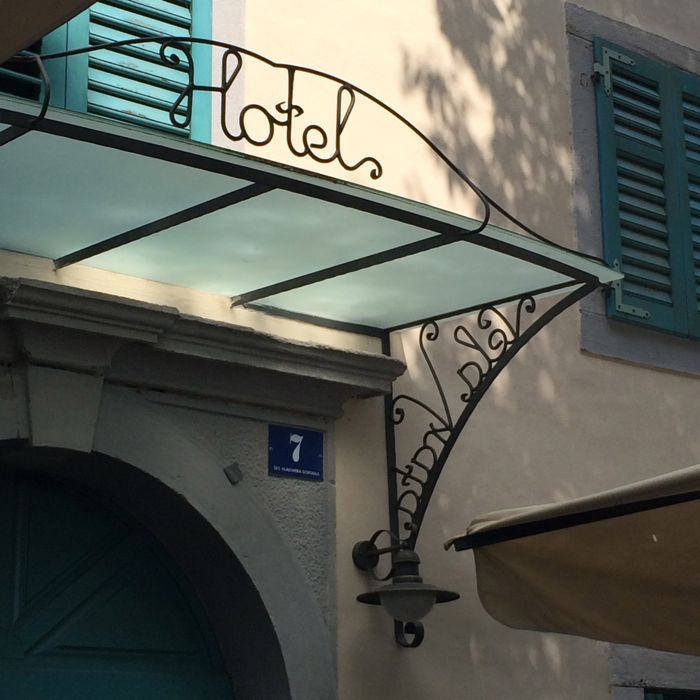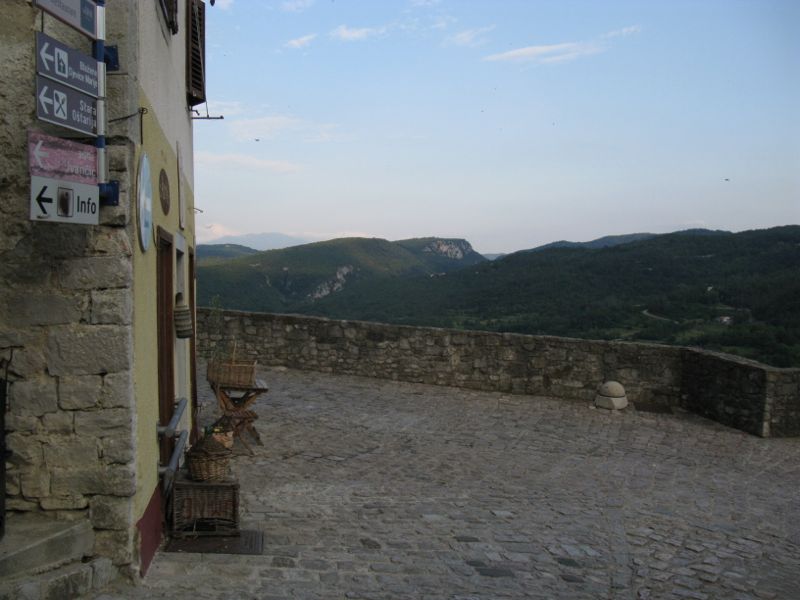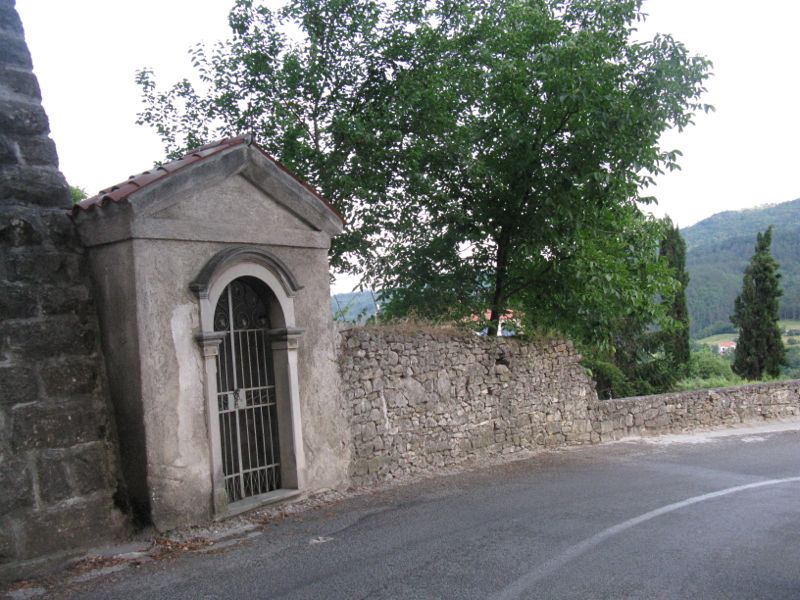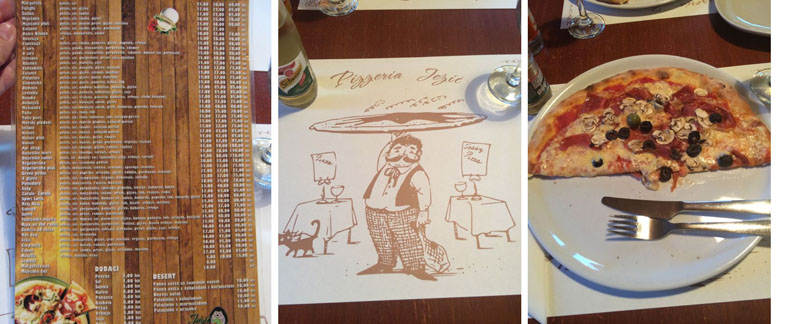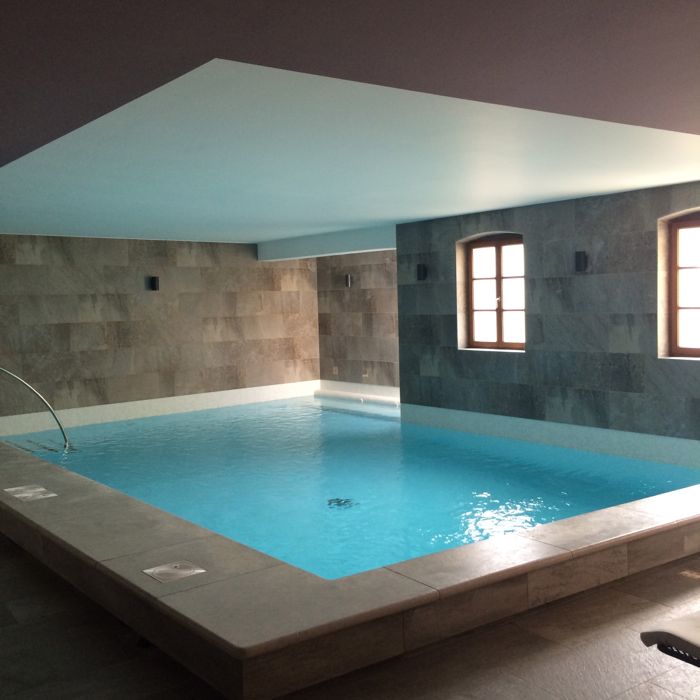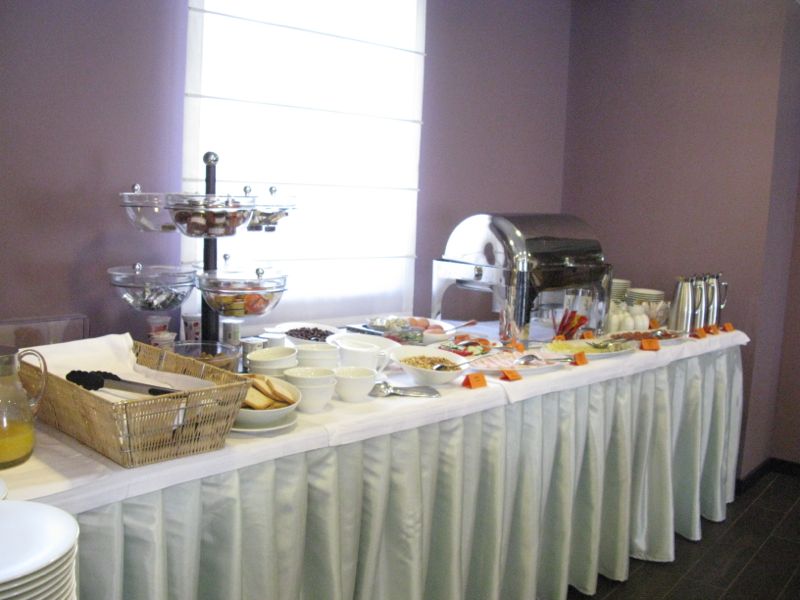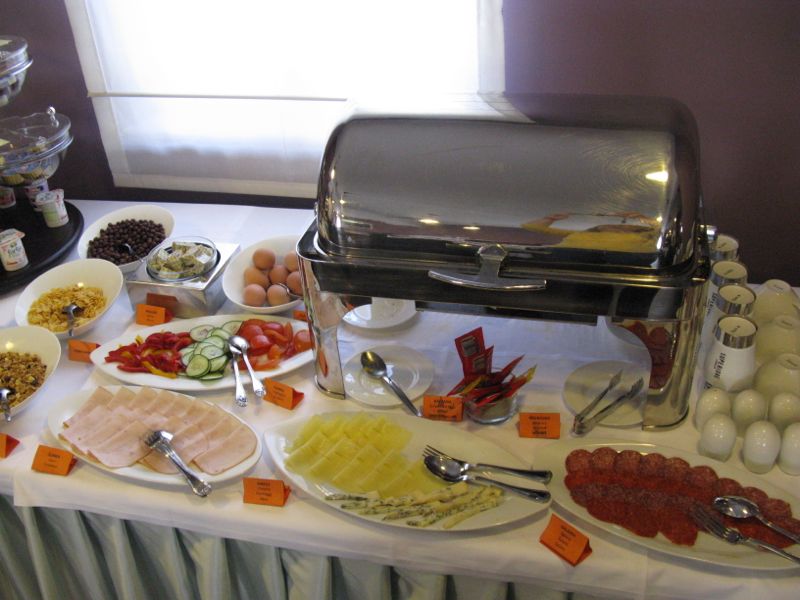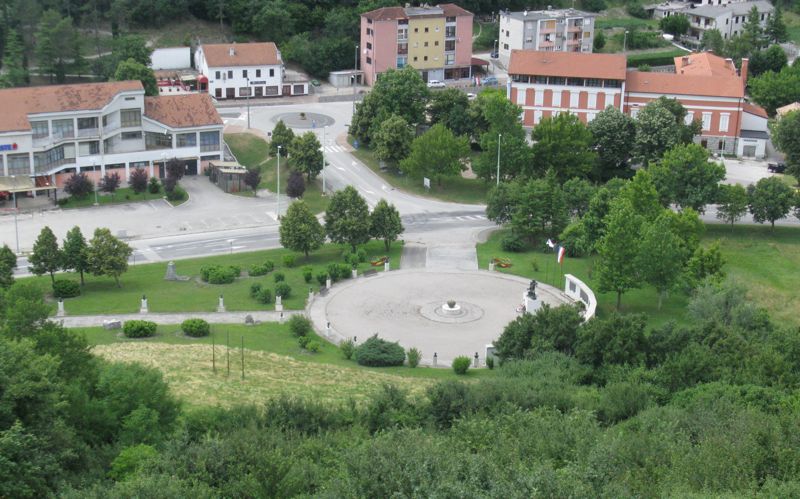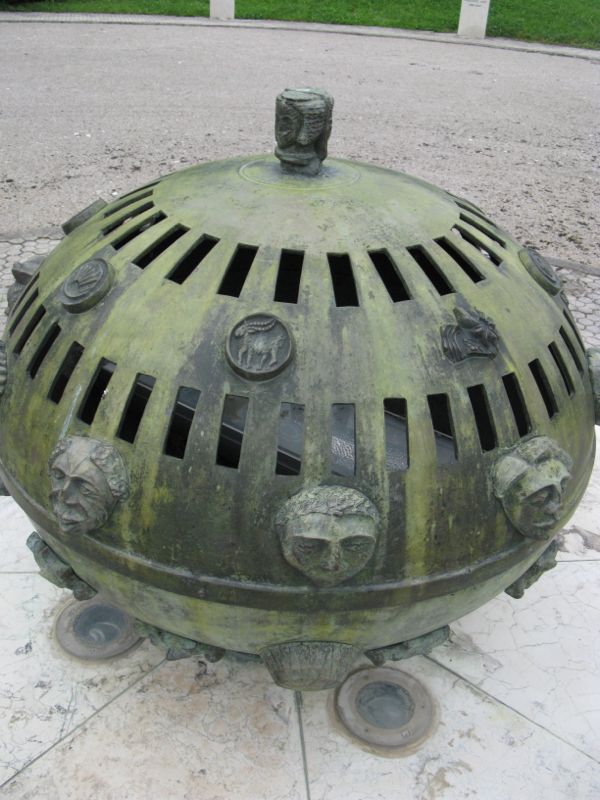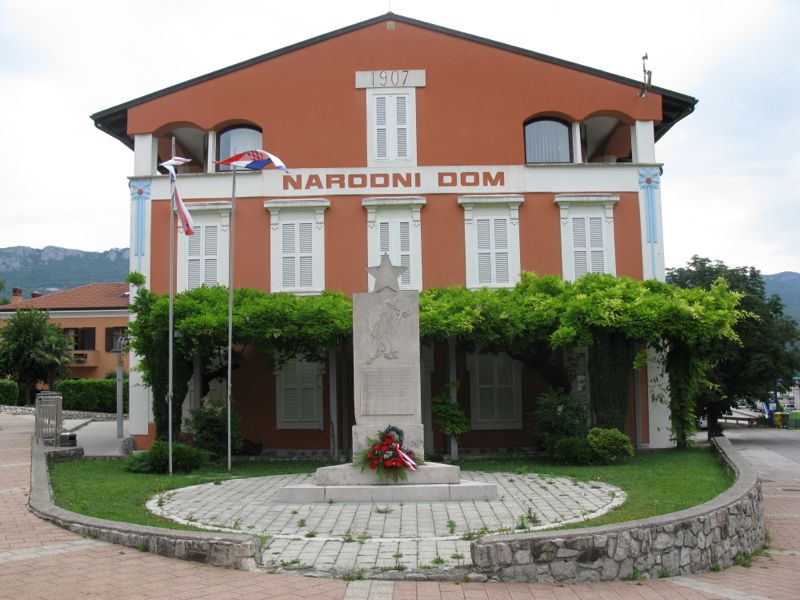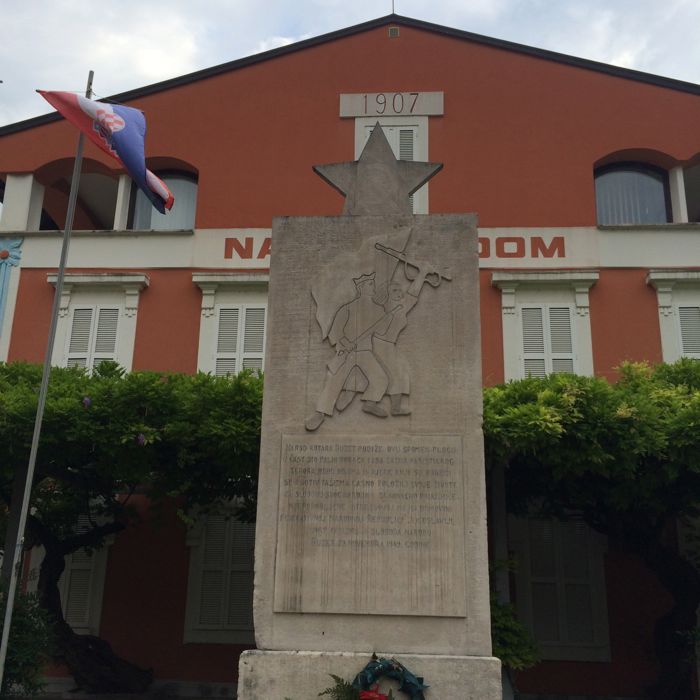(This is the eighth post of our Croatia-Budapest Trip, June-July 2014.)
Sunday June 22
We pulled away from House Tina, and took the country road north towards Karlovac, where our proprietor had been living in a camp during the war. Along the way we lots of houses with bullet holes and shrapnel damage, but there were equally as many all spiffed up with new plaster, paint and new roofs. Croatia seems to be putting the war behind them.
First, a stop at an Interspar store where we saw (from right to left) a clear plastic “can” with aluminum pop top full of clear lemon-water. I didn’t buy it and looked for one the rest of the time we were over there and never saw it again. It was very cool. We also saw a Jane Fondom workout video, right next to a Jane Fonda workout video. And then a very cute red-checked Croatian bag of KiKi candies, which I also purchased, along with supplies for our lunch. I wonder if foreigners come over here and go gaga at our packaging. Do we have any cool packaging?
It’s time to get on the road and get going. This section of freeway, which traverses from east to west across Croatia also has lots of tunnels, but their names are beside them on signs, not over them in fun writing. The terrain is hilly, wooded and in many section on the western side of the country we saw many fallen trees. Apparently there had been a big storm and the temperatures suddenly dropped, freezing all the rain/ice onto the trees, cracking them in half, toppling many. The damage was extensive.
Not too many freeway signs–mostly beautiful countryside. It reminded me of driving through Halifax Canada with long straight highways bordered by trees and fields. Croatia has a toll system for their roads. When you enter them, you draw a ticket from the automated machine and then drive. After a while you see the Autocesta gates and you stop to pay for what you just drove. This is more modern: no coins are thrown in a basket, instead you whip out the bankcard and they swipe it and present you with your card and your receipt. Drive on. At one Autocesta, we took in the scenery:
We drove from the blue dot (Plitvice Lakes National Park) up to Karlovac (red circle), then took the A1 West to Rijecka (green circle), where we promptly got sort of lost, but Dave kept driving and I kept flipping back and forth on my printed-out Google maps and frantically searched my map book, but somehow, someway, we made it through that spaghetti-ed freeway system interchange, heading into Istria. And then we paid a monster fee for traveling through a very very long tunnel.
From Rijecka (green circle), we finally made it to Buzet (violet rectangle). Istria was part of Italy until 1947, when it was scooped up into Yugoslavia, and there it stayed when Croatia split off and kept it. Besides being known as a place for truffle hunting, wine drinking and possible early birthplace of the Glagolitic alphabet (kind of like that old claim “George Washington Slept Here”), it resembles in many ways the hilltown areas of Italy. Some more deft driving and map-following and we glimpsed Buzet on top of a hill: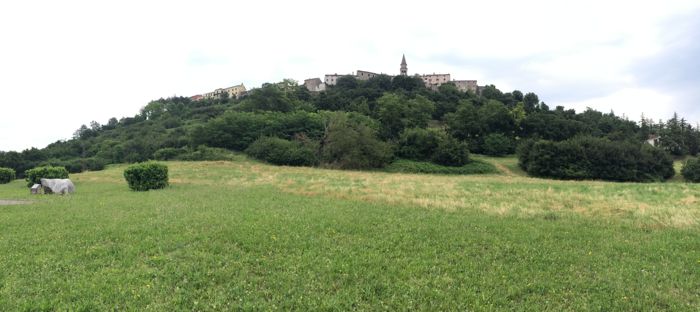
We drove up and looped around through this gate, the “Big” Gate:
On the right is what we saw coming up, and the view on the left is what we saw later, coming down. Yes, it was interesting. We found our hotel right away (after that hard hairpin turn to the left just inside the Big Gate), drove past it looking for parking, drove up and around the town, holding our breath on the narrow streets, then flipped around and came up again, through the gate and parked in front of Vela Vrata, our hotel.
We thought we were in Italy, really, except that everything was written in Croatian and they all spoke that as well. Whenever I’ve been in Italy, I’ve been able to pick up a word or two to add to my pathetically small working vocabulary. This time I didn’t pick up ANY words in Croatian, nor Slovenian, nor Hungarian.
Our room was sweet, the window shut against the day’s heat.
I’ve never been so excited to see shampoo, soap, and drinking glasses. And more than one washcloth and towel. We felt like we were in the Buzetian Waldorf Astoria.
View through the bathroom window.
And we opened up the bedroom window, to see the countryside. We retrieved our luggage from the car, then Dave had to go and repark it “down below,” in a special lot just for the hotel. We turned left onto a street that looked like it would work, except at the bottom there were stairs. Nope. Back up the car. Around that bend there was another street, but I urged Dave just to park the car in the little parking lot below and we would walk up. We did so, and found a little pocket park with a fountain, a family and some benches where we could eat our lunch, purchased in Karlovac.
What is it about European bakeries? The breads are fresh, delicious and available. We’d bought “picnic” supplies and enjoyed our lunch at this little place. Our unstated, but previously assumed goal was to drop our stuff in Buzet and take a driving tour of the Istrian Peninsula. This was rapidly being scaled down to drop our backpack in our room and take a walking tour of the small hilltown.
This is the view to the “front,” just below our little park, of a church and its cemetery.
The route back up to our hotel (really just a couple of long city blocks, but strung out into switchbacks and up a hill) passed by some gardens.
We walked to the right, up behind our hotel to explore. It’s not a large hilltown, and the Sunday afternoon was quiet.
Here’s a map we got AFTER our walk, when the tourist agency with erratic hours finally opened. Lots of things were noted here, but we used our guidebook to sort of guide us around this little town. Our hotel is just across from #6, the South Bulwark, and you can see where we parked our car (the large red P). While I do post this map, try to ignore it. Just go with us on a traipse around a little town where you don’t speak the language, are tired from driving across the country, are happy with having had such a good picnic, and have two cameras to record everything (one for this blog and one for Instagram, later on that night).
These cobblestones were slippery and uneven.
We saw two possible churches, but both were closed.
For some, it was laundry day. And everywhere were potted plants, lush and full.
I need this scissors sign to hang outside my sewing room.
My sister Christine was in China, and her Instagram feed was full of visits to museums. I joked that she goes to museums and we see the sign for one.
And around every lane you could see the edge of the hill drop off into the green valley below.
St. George’s Church (#21 on the map). Nothing was open. Nothing except our hotel and the bar next to it.
We walked up to the top of the town, the church abutting the old crenelated city wall. Buzet has credentials back to the 16th century, but I think the graffiti is newer.
The other side of the church, with a lone bell in the wall.
The view from atop the city wall.
The regular camera records the town’s Big Well (#17) in the center of the city, but the iPhone camera catches the light differently, giving a different look:
The views were expansive, but as Dave noted, “Italy seemed to have better land use management.” Yes, we’d look out over a sweeping valley and see a bunch of high rises, or a quarry, or a car factory. The old Yugoslavia, of which Croatia was a part, had its emphasis on industry and building mostly likely due to its roots in Communism, and the powers-that-be probably thought that a factory was a far better use of land than keeping a view or maintaining its agrarian heritage. It was kind of startling sometimes, as Italy’s hilltowns are surrounded by buccolic landscapes on all sides.
The backside of that gate we just came through. This was the “Little Gate,” (#15 on the left side of the town), whereas the Big Gate (#2) was on the lower right side.
We came back to the hotel. An afternoon nap seemed like a good idea in this equally sleepy hilltown. Forget getting in the car and driving around.
Soon it was dinner time. Really it went like this “It’s 8 o’clock already??!!” We walked back down to our car.
Pizzeria Jezic had about nine hundred options, but luckily a young couple helped us figure out what to get. We opted for a salad (our standard) and a pizza. We told the server we would split the pizza, so it arrived, neatly cut in half on two plates. The World Cup was on the television, but since Croatia wouldn’t be playing until the next night, Monday, June 23rd, the town was not as drawn in to what was being televised. The game was on in the bar as we walked up the hill after dinner, but the dining area in front of the hotel only had two guests. We remarked on how quiet the town was when we checked out the next morning, and the manager said, “Oh wait for tonight when Croatia plays.” We were glad to get a good night’s sleep in the beautiful Vela Vrata hotel in beautiful Buzet, Istria.
I woke up earlier than Dave the next morning, and recorded this from the bathroom window. You might have to turn up the volume to hear the singing birds. We showered, dressed, packed up and headed toward the breakfast room.
First stop: the swiming pool. I’d heard about it on the web and I wanted to see it. I kept thinking how much my sister Susan would like to do her laps in this place.
The breakfast buffet included hot and cold dishes, including some strange things that we passed right by. But it was a nice breakfast room:
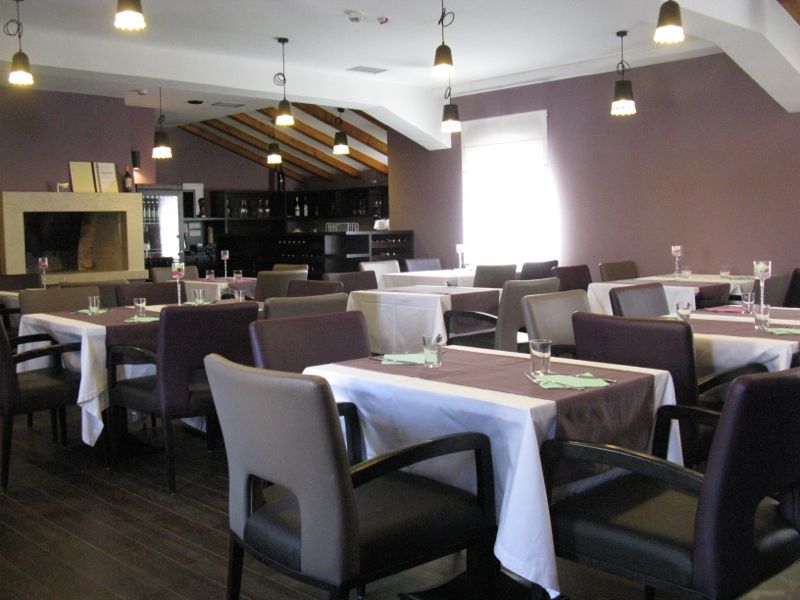 The use of air conditioner was not apparent, a change from the guest rooms in the hotel, and finally the server/attendant opened up opposing windows to give us a breeze through the hot and stuffy room. We poked around places on the way back to our rooms, reluctant to leave such a nice place, but happy to go again.
The use of air conditioner was not apparent, a change from the guest rooms in the hotel, and finally the server/attendant opened up opposing windows to give us a breeze through the hot and stuffy room. We poked around places on the way back to our rooms, reluctant to leave such a nice place, but happy to go again.
We walked our luggage down to the car, remembering a large plaza we’d seen the day before (below).
Somehow Dave made his way there. We think it was a memorial to those who had died in the war.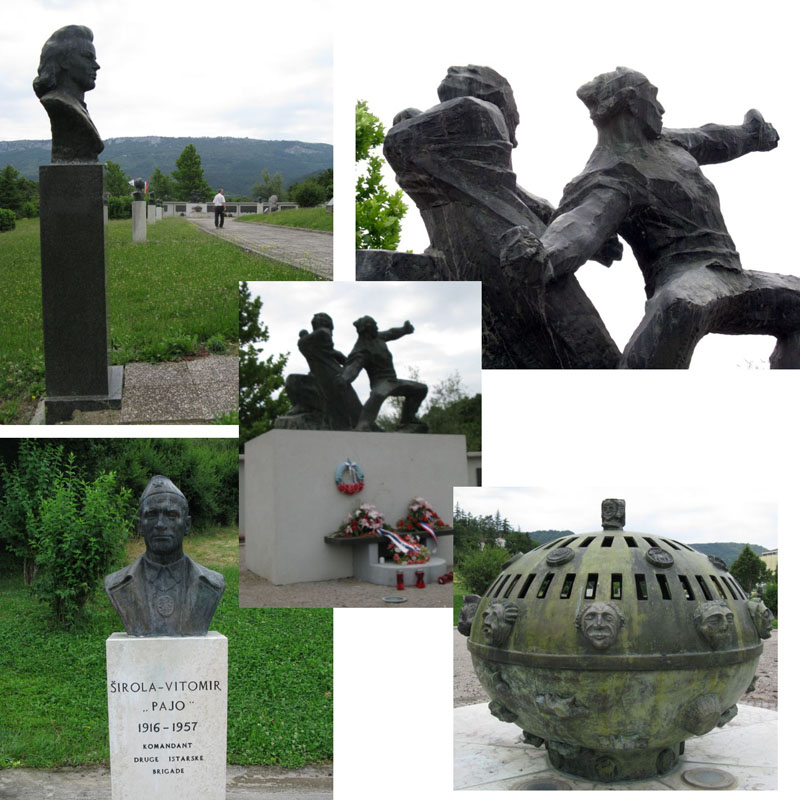
At the center was this strange bowl-shaped object, with the signs of the zodiac on the top and bottom and faces all around the equator of the thing. We assumed, by the look of the light fixture on the inside, that it was some sort of beacon to memorialize the place. We never saw it lit the night before (the pizza place was sort of near this).
We felt like Croatia had been scrubbed of Communism and its relics, finding only this place with some obviously heroic logos from that time.
And then again, it could be about nothing, one of the drawbacks of using graphics instead of language to make your way through a town. We were headed for the Slovenia this morning, and to find a place to buy our “sticker.” Apparently it was a necessary item to drive on Slovenian highways, and we were warned in two guidebooks, as well as by our host at House Tina. He said we would get a fine of 150 euro (about $225) if we didn’t have it, and then the rental car company would fine us too, just for the hassle of having to track us down and bill us. We were on the lookout as we made our way north.
Next up: Slovenia and Ljubljana
